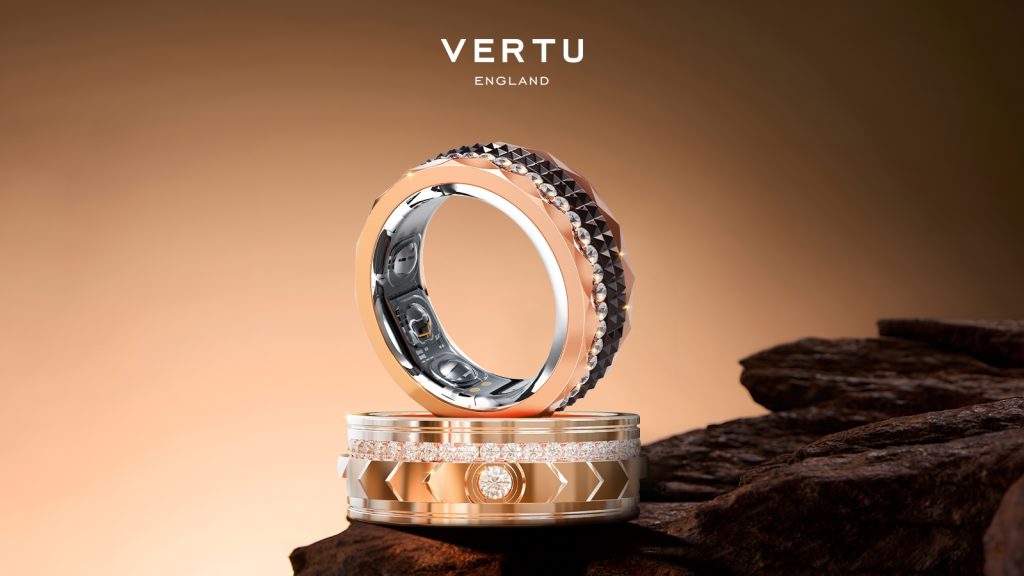
Smart rings, like the VERTU Diamond Ring, are changing health tracking. These heart rate rings mix advanced technology with stylish design. They use special sensors to check your heart rate and HRV. Unlike old methods, smart rings give constant data without bothering you. They study blood flow using light to learn about your heart. Research shows heart rate and RMSSD readings are very accurate. This makes smart rings a trusted way to watch your health. With this mix of style and tech, staying healthy is now simpler than ever.
Key Takeaways
-
Smart rings use special PPG technology to check heart rate and HRV. They let you track health all day without stopping your activities.
-
Things like skin color, movement, and how the ring fits can change how accurate it is. Wearing it snugly and moving less can make the data better.
-
Smart rings help with fitness and stress by tracking heart rate and HRV. This helps users improve how they perform and recover.
-
Smart rings are easy to wear but not as exact as medical tools like ECGs. For serious health problems, talk to a doctor.
-
More people are buying smart rings because they look nice and track health. Sales are expected to grow a lot in the next few years.
How Smart Rings Measure Heart Rate
Photoplethysmography (PPG) Technology
Smart rings check your heart rate using PPG technology. This method uses light to track blood flow changes. A tiny LED in the ring shines light on your skin. The light bounces back to a sensor, showing blood movement. These changes help the ring figure out your heart rate and HRV.
PPG is gentle and works all the time. It lets smart rings track your heart health without stopping your daily tasks. This makes heart rate tracking easier and more useful for everyone.
Light Absorption and Blood Flow Detection
PPG works by measuring how blood absorbs light. Blood takes in more light than other body parts. When your heart beats, the light absorption changes. The ring's sensor notices these changes and turns them into data. This data shows your heart rate and HRV.
For example, when you exercise, your heart beats faster. This causes quicker changes in light absorption. The ring tracks these fast changes and gives real-time heart data. This process keeps measurements accurate, even during workouts.
A 2022 study in the Journal of Medical Internet Research proved optical sensors are reliable. Researchers compared the Oura Ring's heart data with ECG results. They found the ring's readings were very accurate.
|
Title |
Authors |
Journal |
Year |
DOI |
|---|---|---|---|---|
|
Accuracy assessment of Oura Ring nocturnal heart rate and heart rate variability in comparison with electrocardiography in time and frequency domains: Comprehensive analysis |
R. Cao, I. Azimi, F. Sarhaddi, H. Niela-Vilen, A. Axelin |
J. Med. Internet Res. |
2022 |
10.2196/27487 |
Algorithms for Heart Rate and HRV Measurement
The ring's sensors collect data, which is then processed. Special algorithms study the light patterns to find heart rate and HRV. These algorithms remove errors from movement or outside light. They focus on key details to give accurate results.
HRV is about the time between heartbeats. This shows how your nervous system is working. The ring's algorithms use this to check stress, recovery, and health.
Smart rings like the VERTU Diamond Ring use advanced algorithms. These adjust to different situations, making them dependable. Whether you're resting or moving, the ring gives steady and helpful data.
The Accuracy of Heart Rate Monitoring in Smart Rings
Factors That Affect Accuracy (e.g., skin tone, movement, fit)
Smart rings' accuracy depends on several things. Your skin tone, how much you move, and the ring's fit all matter. For example:
-
Darker skin tones might cause small errors. Melanin absorbs green light, which sensors often use for heart rate checks. The ring may need more power to measure accurately.
-
Moving a lot, like when running or biking, can mess up the data. Smart rings use advanced systems to fix these errors, but too much motion can still affect results.
-
A snug fit keeps the sensors touching your skin. If the ring is loose, it might not collect steady data.
Fixing these issues can make your smart ring's heart rate and HRV readings more reliable.
Comparing Smart Rings to ECG and Chest Straps
Smart rings are easy to use for heart health tracking. But how do they compare to ECG monitors and chest straps? Here's a simple comparison:
|
Feature |
Chest Strap |
Smart Ring |
|---|---|---|
|
Accuracy |
Medium to high, based on the model |
|
|
Sensor Type |
Direct electrical signals |
Optical sensors using light |
|
Comfort |
Can feel tight or heavy |
Light and comfortable |
|
Convenience |
Worn only during exercise |
Always ready to use |
|
Battery Life |
Lasts weeks to months |
Shorter, up to 10 days |
|
Best For |
Athletes, intense workouts |
Everyday fitness and health tracking |
Chest straps and ECGs are the most accurate. But smart rings are more comfortable and flexible. They’re great for tracking resting heart rate, HRV, and daily activities without disrupting your day.
Improvements in HRV Measurement and Sensors
New technology has made HRV tracking much better. Modern smart rings now have improved sensors and smarter systems. For example:
-
The Oura Ring Gen3 is 99% as accurate as medical heart monitors. It uses infrared and red light sensors with tested algorithms.
-
The Ultrahuman Ring is 97-99% as accurate as medical ECGs. It has features like adaptive algorithms and light-blocking tech.
|
Smart Ring Model |
Accuracy Metrics |
الميزات |
|---|---|---|
|
Oura Ring Gen3 |
Infrared and red light sensors, temperature tracking, tested algorithms |
|
|
Ultrahuman Ring |
97-99% as accurate as medical ECGs |
Green LED sensors, adaptive algorithms, light-blocking features |
|
Femometer Smart Ring |
N/A |
Tracks heart rate, HRV, oxygen levels, and skin temperature |
|
Ringconn HeartRate Ring |
N/A |
Optical heart rate tracking, custom health reports, budget-friendly |
These updates make smart rings a trusted way to track HRV. Whether you're checking stress, recovery, or health, new sensors give you accurate and useful data.
Practical Uses of Heart Rate Monitoring
Fitness Tracking and Exercise Modes
Smart rings have changed how we track fitness. They give real-time updates on your activity. These rings check your heart rate and HRV during workouts. This helps you improve performance and recover better. Whether running, biking, or doing yoga, the ring adjusts to your activity. It gives accurate data for each exercise type.
The rise of smart rings in fitness is clear:
-
The smart ring market may grow from $211 million in 2024 to $1548.56 million by 2033, with a 25.4% yearly growth.
-
Bluetooth smart rings, mainly for health tracking, make up 47% of the market.
-
More people want health tracking features, boosting their popularity.
With a smart ring, you can track progress and set goals. It also helps you learn about your heart health. This makes it a great tool for improving fitness.
Stress Control and HRV Information
Stress affects your health, but smart rings can help. They study HRV to show how your body handles stress. Low HRV means more stress, while high HRV shows better recovery.
Studies link HRV to stress:
|
Findings |
الوصف |
|---|---|
|
Low HRV and Mental Stress |
|
|
Oura Ring and Anxiety |
Oura Ring HRV readings match anxiety symptoms. |
|
HRV and Cortisol Correlation |
You can use this data to practice relaxing, like deep breathing or meditating. Over time, this can raise your HRV and lower stress.
Heart Health Monitoring and Early Warnings
Smart rings are key for heart health checks. They track heart rate and HRV all the time. This data can show problems like irregular heartbeats or heart disease early.
Research proves wearables help with heart health:
-
A review of 26 studies showed 94.80% sensitivity and 96.96% specificity for spotting irregular heartbeats.
-
Adjusting sensitivity and specificity improves real-world use for heart problem detection.
With such accuracy, smart rings help you act early on heart health issues. Early warnings can lead to quick treatment and prevent serious problems.
Limitations and Challenges of Smart Rings
Environmental and Physical Factors Affecting Readings
Smart rings use light sensors to check your heart rate. But, outside factors can sometimes mess up their accuracy. Vibrations or sudden temperature changes can confuse the sensors. Outdoor activities can also make it harder to get steady readings.
Physical movements can cause problems too. Quick or uneven motions, like running or cycling, may create errors in the data. Some activities, like swimming or lifting weights, can also affect how well the ring works.
|
Environmental Factors |
Physical Factors |
|---|---|
|
Vibrations or temperature changes |
Quick or uneven motions |
|
Outdoor activities |
Swimming or weightlifting |
To improve accuracy, wear the ring snugly. Try to limit extra hand movements while using it. These steps can help the ring work better.
Limitations Compared to Clinical-Grade Devices
Smart rings are easy to use but not as precise as medical tools. Devices like ECG monitors are much better for checking heart health. ECGs use electrical signals, while smart rings rely on light sensors, which are less accurate.
Smart rings are great for daily tracking. They show trends in your heart health over time. But they might miss small problems that medical devices can find. For serious health concerns, always talk to a doctor.
Battery Life, Data Privacy, and Connectivity Concerns
Battery life is still a problem for many smart rings. Some need frequent charging, which can interrupt tracking. People prefer rings with longer battery life for constant monitoring.
Data privacy is another issue. Smart rings collect personal health data, so keeping it safe is very important. Problems with Bluetooth range can also make it hard to send data to your phone or other devices.
-
Protecting health data is very important for users.
-
Better battery life makes smart rings more useful.
-
Fixing connection issues will improve user experience.
Solving these problems will make smart rings more dependable for tracking heart health.
Smart rings, like the VERTU Diamond Ring, mix style with health tracking. They check your heart rate and HRV every minute. These rings are often more accurate than older devices. Besides health, they can also do things like contactless payments. Partnerships, like Gucci and Oura, show their growing popularity.
-
In 2022, 17.2 million smart rings were sold worldwide. By 2028, sales may pass 50 million, growing 21.9% each year.
-
Over 65% of buyers use them for stress and recovery tracking. About 55% focus on sleep monitoring.
With better technology, smart rings will help more with health. They are light, easy to wear, and track your health all day.
التعليمات
What makes smart rings unique compared to other wearables?
Smart rings are smaller and less noticeable than smartwatches. They track health all day without feeling heavy. You can wear them comfortably, even while sleeping. Their stylish look works for both fancy and casual events.
How accurate are smart rings for checking heart rate?
Smart rings use special sensors and smart systems to track heart rate. They aren't as exact as medical devices like ECGs. But they are accurate enough for everyday health checks. Many studies show they are over 95% accurate compared to medical tools.
Can smart rings measure stress levels?
Yes, smart rings check stress by studying heart rate variability (HRV). Low HRV often means higher stress levels. By watching this data, you can spot stress patterns. Then, you can relax with deep breathing or mindfulness exercises.
Are smart rings safe to use in water?
Most smart rings, like the VERTU Diamond Ring, resist water. You can wear them while washing hands or doing light water activities. But always check your ring's water rating before swimming or showering.
How long does a smart ring’s battery last?
Battery life depends on the ring. Many, like the VERTU Diamond Ring, last up to 10 days. This means you can track your health without charging often, making them easy to use daily.




